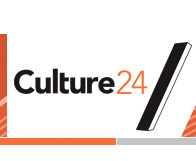The following list is an overview of modern mobile phone uses or application.
-
Apps
Apps, or applications, are small user programmes for the mobile (smartphones in particular) that can be downloaded from the internet. The most popular apps amongmobile users are useful and practical aids. These include weather forecasts, compasses, work planners, pocket lamps and traffic jam alerts. Today there is an application for almost any situation. Various social networks or news sites are now available in user friendly format via a mobile device.
-
Camera
Almost all mobile phones on the market today have an integrated digital camera capable of taking high quality photographs. As mobile phones are generally carried at all times, they provide a practical way of recording everyday situations and experiences. Photographs can be loaded onto the internet or sent to another person’s mobile in seconds. Camera phones are also now being used widely by professional photographers.
-
Codes
QR codes (quick response codes) are two-dimensional codes consisting of black and white points in a square. They are used to codify web addresses, telephone numbers or longer texts. Many mobiles have the reader software to de-code QR codes. The internet allows free generation of QR codes. Barcodes can be used by a company to send an MMS to their loyal customers allowing them to redeem vouchers.
-
Games
There are numerous games for download from the internet onto a mobile phone. Whether action, adventure, ‘jump n run’, or strategy – almost any category of game is represented. More and more educational games have been developed and many mobiles come with several games pre-installed.
-
Internet
The latest mobile phones afford internet access with a web browser installed as standard. The mobile network allows surfing and additional W-LAN interfaces are increasingly available. Internet via mobiles extends access beyond traditional websites to numerous applications specially developed for mobiles. Within a few seconds, photographs, videos, etc. can be uploaded from a mobile to the web.
-
Navigation
Equipped with a GPS receiver and the appropriate software, the mobile phone becomes a mapping system that guides the user from A to B. ‘Location Based Services’ allow access to various geo data such as the nearest pharmacy or restaurant ratings from other users. Geocaching is a modern treasure-hunting game using a GPS.
-
Mail
The mobile Internet allows the retrieval and sending of emails via a mobile phone. Many mobiles have pre-installed email programmes.
-
Mp3 player
Listening to music on a mobile is a part of many people’s lives. Generally music files are downloaded from the internet, which is permissible for private use. However, exchanging files may breach copyright law. Exceptions include music licensed by Creative Commons and some audio recordings such as radio podcasts.
-
Office
Useful office applications such as calculators, notepads, calendars, address books, task lists and stopwatches are now part of the standard equipment of a mobile.
-
Radio and television
There have been mobile phones with integrated radio receivers for many years. Since 2004 it has been possible to watch television on a mobile and the number of options and functions grows continuously.
-
SMS/MMS
Sending and receiving text messages (SMS) and images (MMS) are the most popular mobile phone functions among young people. Over time, text messaging has developed its own language.
-
Video
Most mobile phones can also record video. Children and young people use their mobiles to record, watch and exchange videos. Transfer is generally done wirelessly, from mobile to mobile. The increasing popularity of mobile filmmaking has even led to the formation of film festivals.




